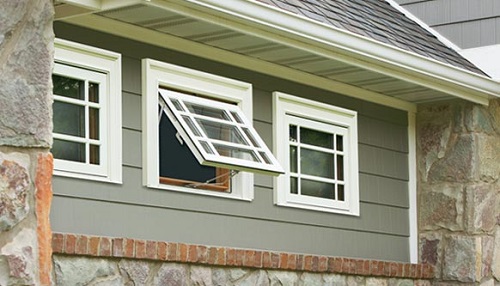Fresh air
The term ‘fresh air’ is commonly used to refer to air that is outside (or from outside) a building or enclosed space, as opposed to that which is inside. In order to ensure a good supply of fresh air, buildings need to be properly ventilated. Sometimes air that is not fresh is referred to as 'stale air'.
The provision of fresh air in a building is important to occupants’ wellbeing and has several benefits, including:
- Increasing oxygen availability and removing carbon dioxide.
- Maintaining a comfortable temperature.
- Enabling optimum brain functioning, increasing energy levels and improving concentration.
- Diluting and removing odours.
- Helping to moderate internal humidity.
- Reducing the accumulation of moisture, bacteria, dust, smoke and other contaminants.
Insufficient fresh air can result in occupants feeling tired, experiencing headaches, irritated eyes, and so on.
The Workplace (Health, Safety and Welfare) Regulations 1992 require that an employer does what is needed to make sure that every enclosed workplace is ventilated by a sufficient quantity of fresh or purified air. It states that the fresh air supply rate should not normally fall below 5-8 litres per second, per occupant. The appropriate rate should be decided by several factors, such as the amount of floor space per occupant, the work activity, possible sources of airborne hazards, and so on.
For more information see: Ventilation.
[edit] Related articles on Designing Buildings
- Air.
- Air conditioning.
- Air quality.
- Air Quality Taskforce.
- At a glance - Indoor air quality.
- Bringing a breath of fresh air to the design of indoor environments.
- Building related illness.
- Clean indoor air for healthy living - New air filter standards.
- Human comfort in buildings.
- Indoor air quality.
- Sick building syndrome.
- Re-circulation air.
- Stale air.
- Thermal comfort.
- Ventilation.
Featured articles and news
The UK's Modern Industrial Strategy: A 10 year plan
Previous consultation criticism, current key elements and general support with some persisting reservations.
Building Safety Regulator reforms
New roles, new staff and a new fast track service pave the way for a single construction regulator.
Architectural Technologist CPDs and Communications
CIAT CPD… and how you can do it!
Cooling centres and cool spaces
Managing extreme heat in cities by directing the public to places for heat stress relief and water sources.
Winter gardens: A brief history and warm variations
Extending the season with glass in different forms and terms.
Restoring Great Yarmouth's Winter Gardens
Transforming one of the least sustainable constructions imaginable.
Construction Skills Mission Board launch sector drive
Newly formed government and industry collaboration set strategy for recruiting an additional 100,000 construction workers a year.
New Architects Code comes into effect in September 2025
ARB Architects Code of Conduct and Practice available with ongoing consultation regarding guidance.
Welsh Skills Body (Medr) launches ambitious plan
The new skills body brings together funding and regulation of tertiary education and research for the devolved nation.
Paul Gandy FCIOB announced as next CIOB President
Former Tilbury Douglas CEO takes helm.
UK Infrastructure: A 10 Year Strategy. In brief with reactions
With the National Infrastructure and Service Transformation Authority (NISTA).
Ebenezer Howard: inventor of the garden city. Book review.
The Grenfell Tower fire, eight years on
A time to pause and reflect as Dubai tower block fire reported just before anniversary.
Airtightness Topic Guide BSRIA TG 27/2025
Explaining the basics of airtightness, what it is, why it's important, when it's required and how it's carried out.
Construction contract awards hit lowest point of 2025
Plummeting for second consecutive month, intensifying concerns for housing and infrastructure goals.
Understanding Mental Health in the Built Environment 2025
Examining the state of mental health in construction, shedding light on levels of stress, anxiety and depression.
The benefits of engaging with insulation manufacturers
When considering ground floor constructions.
Lighting Industry endorses Blueprint for Electrification
The Lighting Industry Association fully supports the ECA Blueprint as a timely, urgent call to action.
























